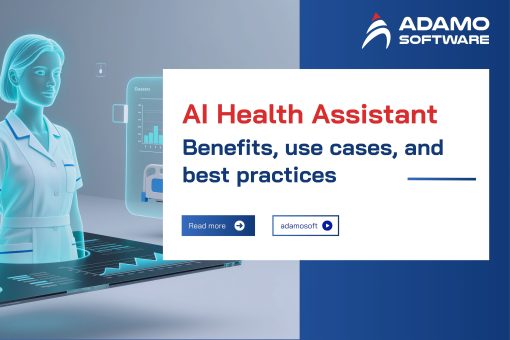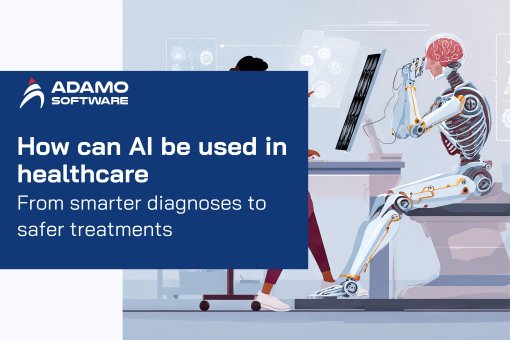Online patient form: A step-by-step guide for healthcare providers
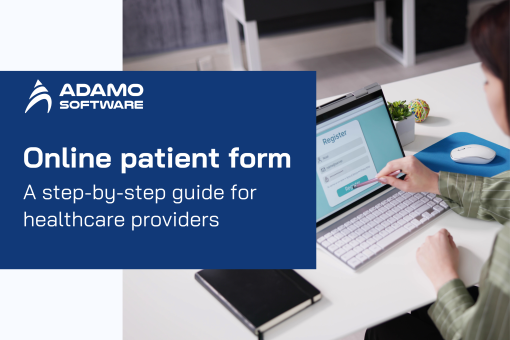
Simplify patient intake with online patient form – save time, enhance care, and ensure secure data management for a seamless healthcare experience.
The healthcare industry has recently shifted from paper-based to digital platforms. This shift is particularly important in the patient intake process, as it involves collecting and organizing data when a patient arrives at a healthcare facility. Traditionally, this process has been labor-intensive and paper-based, often leading to errors and delays impacting patient satisfaction and efficiency. As a result, more and more patients report that they prefer most of their healthcare communications to be conducted digitally.
The move to digital online patient forms marks a major step forward in healthcare. So, what purpose do these forms serve, and why do we need them? This article will explore online patient forms, their benefits, and how online patient forms improve patient experience.
I. What is an Online Patient Form?
An online patient form is a digital solution to streamline patient intake. They are forms hosted on your website or in your patient portal. They contain fields where patients can enter their relevant medical history. These forms collect information just like traditional paper forms but with less effort.
Unlike manual forms, the new digital patient intake form allows providers to send it to potential patients in advance, and patients can fill it out anytime. This ensures that staff have all the correct details days before the patient arrives at the clinic.
Key Features of Online Patient Forms
- Accessibility: Online patient forms must be accessible from various platforms, including PCs, Laptops, and mobile devices.
- Security: A well-designed online patient form should have the same security features as any other form associated with an electronic health record (EHR).
- Visibility: Patients should be able to track their forms to confirm that the clinic has received them.
II. Benefits of using online patient forms for healthcare providers
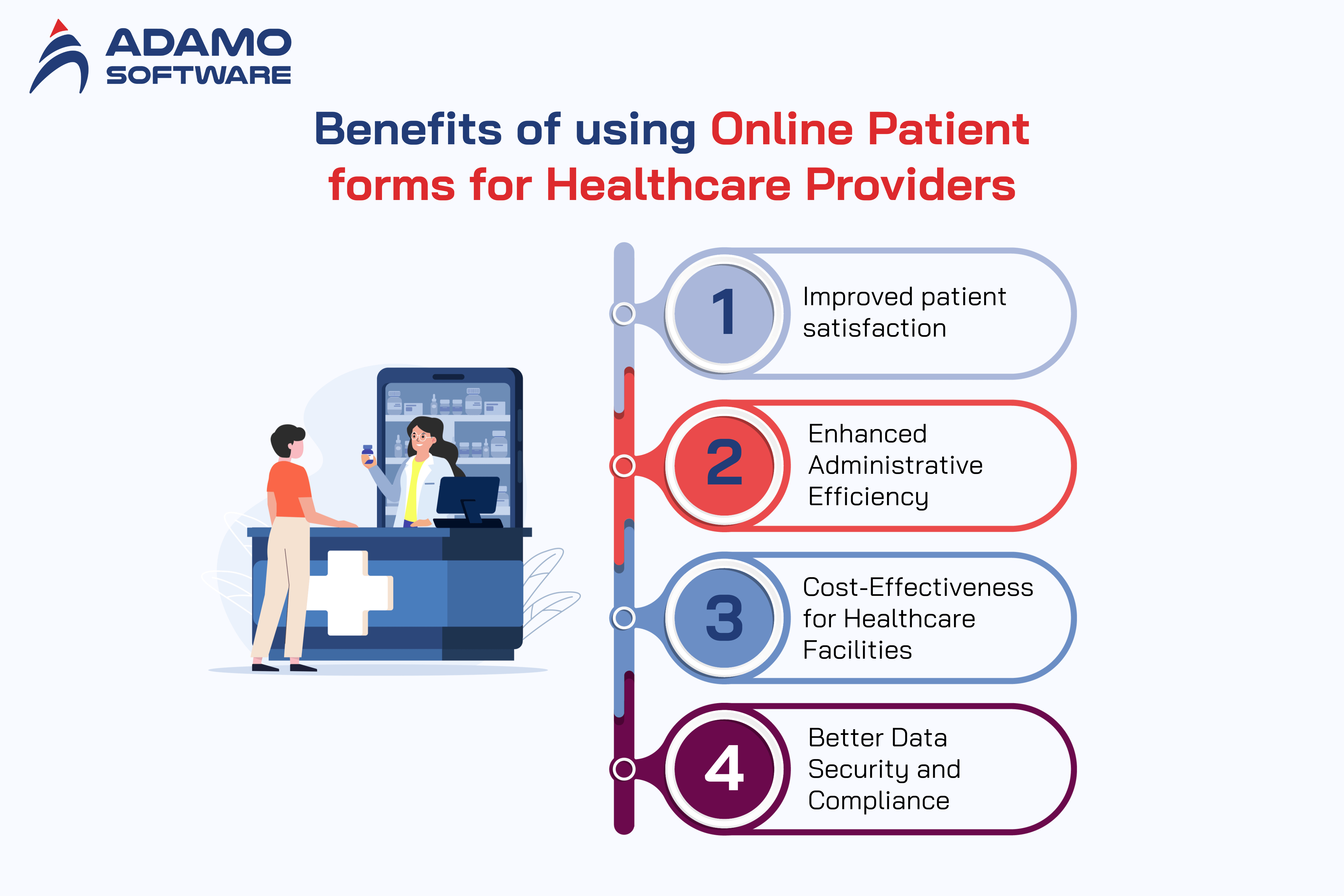
Section 1: Improved Patient Satisfaction
Using online patient forms significantly improves the patient experience and makes visiting medical facilities more convenient and time-saving.
1. Convenience of Online Form Completion
First, using online patient forms simplifies the pre-visit process. It allows patients to fill out the necessary paperwork when they want, at home or on the go. It reduces the hassle and anxiety of appointments.
Additionally, patients find it convenient to fill out forms at their own pace, allowing them to provide more accurate medical information. This convenience is not only for the tech-savvy; it also benefits older and non-tech-savvy patients thanks to its user-friendly interface, accessible to all ages.
2. Reduced Wait Times and Faster Processing
The demand for reliable healthcare services has skyrocketed in today’s rapidly evolving digital world. Patients increasingly expect fast, efficient interactions with healthcare providers, and providers are tasked with managing large volumes of data accurately and carefully. The urgent need for quick, reliable access to patient information during medical emergencies has highlighted the critical role of robust data management solutions.
Section 2: Enhanced Administrative Efficiency
Online patient forms significantly increase efficiency in healthcare settings, help organize data and reduce errors.
1. Streamlining Data Collection and Integration
Digital forms make data collection easier and connect directly to the health record (EHR) and other healthcare systems for management purposes. This connection allows healthcare professionals to automatically update details without having to enter data and handle administrative tasks. This saves time and ensures all patient information is available to healthcare providers. The result is improved communication and better patient care management within the organization.
2. Real-time Data Availability and Error Reduction
Another important benefit of online patient forms is the advantage of real-time data access as soon as the patient submits their information. This immediate access across the entire healthcare provider network allows for timely decision-making and rapid action. Therefore, in critical care and emergencies, the ability to quickly access patient information can directly impact efficiency. Additionally, online patient forms reduce the risk of common errors in paper forms, improve information accuracy, and reduce the likelihood of medical errors.
Section 3: Cost-Effectiveness for Healthcare Facilities
Using healthcare forms online can help healthcare facilities save money by reducing paperwork costs and streamlining labor-intensive processes.
1. Decreased Need for Paper Supplies and Storage
Switching from paper to digital forms eliminates the need for physical paperwork, which can often be a significant expense for supplies, printers, ink, and maintenance. Managing, storing, and protecting paper records requires valuable space and resources. That’s why switching to digital forms can significantly reduce these costs through secure, centralized data storage.
In addition, this transition not only streamlines patient record management, increases access to backups, and ensures compliance with medical record protocols without relying on physical infrastructure.
2. Reduced Labor Costs Through Automation
Adopting patient registration forms has significantly reduced the workload associated with data entry and management in healthcare facilities. It eliminates paper-based methods that require a lot of manual effort to process and organize patient records. This automation allows healthcare organizations to redirect their workforce to more important tasks. Including improving patient care and enhancing the overall patient experience. Instead of being burdened by administrative tasks.
Additionally, online patient forms reduce the need for costly and time-consuming rework. Yet it ensures seamless communication between departments, increasing efficiency and minimizing delays in patient care. This solution not only saves costs but also improves the quality of service. It creates a win-win situation for healthcare providers striving to improve operational efficiency while maintaining the highest standards of patient care.
Section 4: Better Data Security and Compliance
Using online patient forms helps improve data security and compliance in healthcare settings by adhering to regulations and protecting against data breaches.
1. Compliance with Health Regulations
Digital patient intake forms are designed to comply with important healthcare regulations, such as the Health Insurance Portability and Accountability Act (HIPAA), which protects sensitive patient information in the United States. These platforms ensure that all patient data collected through online patient forms is securely encrypted and complies with state and federal laws.
Additionally, compliance is not only about meeting legal standards but also about promoting patient trust. They allow for quick updates to forms, ensuring timely compliance with regulatory changes. This proactive approach helps healthcare organizations maintain compliance and minimize the risk of legal or operational issues.
2. Enhanced Data Security Measures and Reduced Risks of Breaches
Online patient forms are equipped with advanced security features, such as data encryption and secure user authentication, to minimize the risk of data breaches. These measures can effectively protect sensitive information from unauthorized access and cyberattacks. Additionally, these forms maintain comprehensive audit logs that track user activity and record who accessed or modified patient information.
In addition, this additional layer of security also increases system accountability. Healthcare organizations can quickly address suspicious behavior by providing accurate data usage records. This helps minimize risk and ensure the integrity of patient information.
3. Integration with Other Healthcare Technologies
Integrating the online patient registration form with healthcare technologies such as Electronic Health Records (EHR) systems and appointment scheduling platforms marks a significant step towards building a more efficient and connected healthcare ecosystem.
4. Linking Intake Forms with Electronic Health Records (EHRs)
By linking the online patient registration form to the Electronic Health Record (EHR), the information provided by the patient is seamlessly updated in their electronic files. This ensures that healthcare providers across multiple departments can access accurate real-time information. The approach helps streamline and enhance decision-making, improve patient safety, and support better outcomes by equipping all attending physicians with up-to-date patient data.
5. Integration with Appointment Scheduling and Management Systems
Finally, seamless integration with appointment scheduling systems automates the scheduling process for both patients and healthcare providers. Thus, patients can easily check available time slots and schedule appointments directly while completing registration. This integration allows for easy synchronization with the provider’s calendar. Additionally, it enhances convenience, optimizes scheduling efficiency, and improves resource management in healthcare facilities.
An even greater benefit is that it enables streamlined communication between the registration and scheduling systems, reducing administrative burden, improving service quality, and increasing patient satisfaction while significantly reducing missed appointment rates.
You can explore more about What is remote patient monitoring? Tech stacks and real-life examples here.
III. How online patient forms improve patient experience
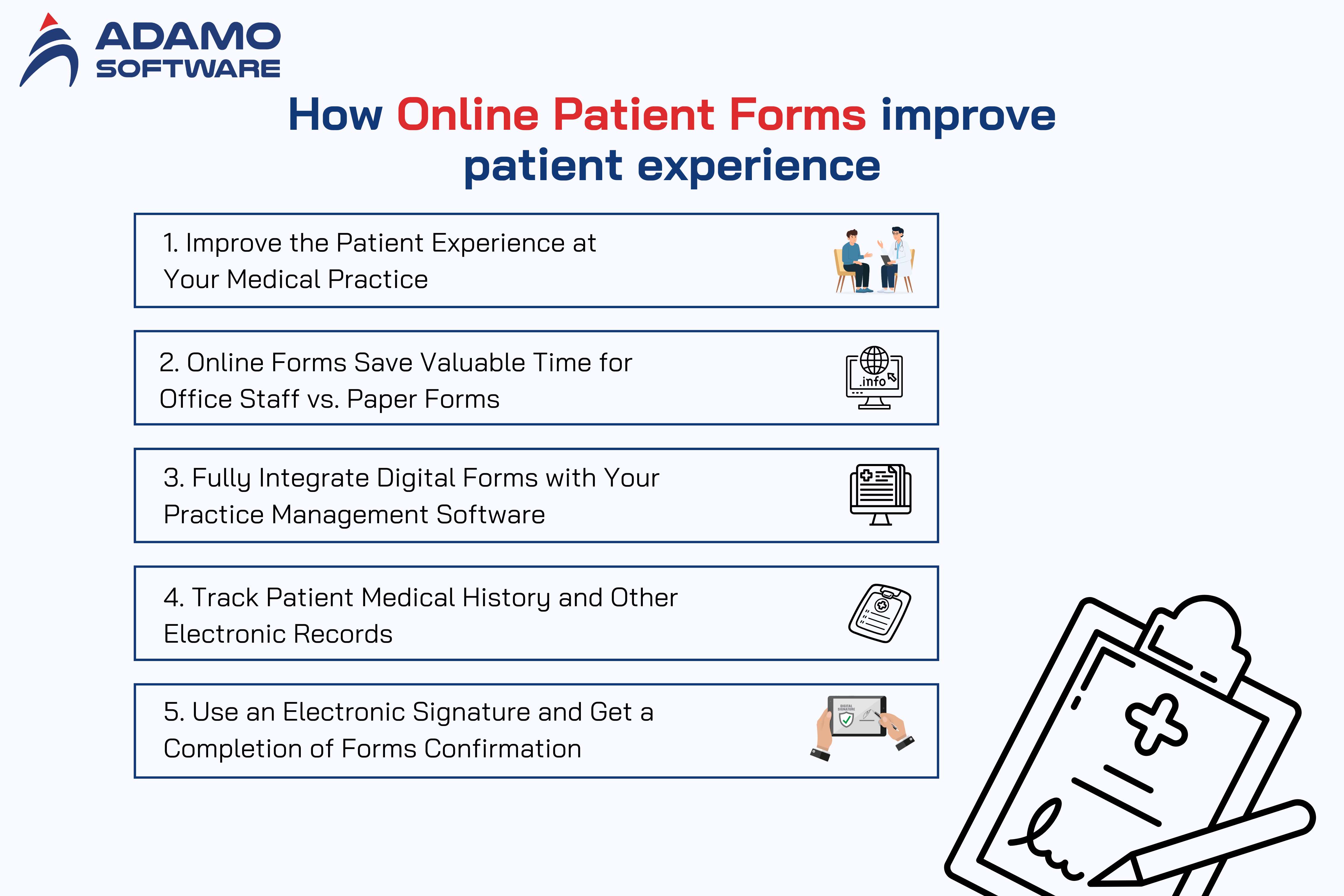
1. Improve the Patient Experience at Your Medical Practice
Implementing an online patient intake program is one of the simplest yet most effective ways to improve the patient experience at your medical practice. Using online patient forms instead of paper intake forms can make your practice more accessible and organized. Here’s how.
2. Online Forms Save Valuable Time for Office Staff vs. Paper Forms
Paper forms add extra work for both patients and your office staff, which costs you labor costs. The average paper intake form takes a long time to complete. Potential patients must arrive at your practice well before their appointment time to complete the registration form. If they don’t have all of their insurance cards or other information needed, the form is still incomplete, and you need to bother them again by calling them to get the rest of their information.
Once a patient has submitted a form, your office staff must read their handwriting and enter their responses into your practice’s EHR. This can take up hours of staff time each week, which could be better spent on more valuable tasks.
Replacing paper forms with online patient forms cuts out the wasted time entirely. Your patients don’t have to guess which parts of the form are important; they simply enter their answers in the sections presented. Meanwhile, all your staff has to do is quickly review submitted forms for accuracy before approving them. Data entry is completely removed from the process, saving your team valuable time.
3. Fully Integrate Digital Forms with Your Practice Management Software
Online patient forms are also a great way to integrate essential medical forms directly into your practice management software. They allow you to transfer patient feedback forms directly into your practice management software.
Whether a patient is filling out a practice-wide form to register for an appointment or request a prescription renewal, your management software flags and categorizes it as soon as they submit it. You and your office staff will know immediately that something needs to be looked at and the next steps to take. This keeps forms from getting lost in the shuffle and your patients from waiting for a response.
4. Track Patient Medical History and Other Electronic Records
Small and large practices can have hundreds of patients on file. To provide continuity of care, you must carefully track each patient’s medical history and electronic records.
Online patient forms make this simple. When patients fill out the initial registration form, their responses are automatically uploaded to your practice’s online health record. There’s never a chance of one of your staff making a mistake during data entry, so the information you collect is guaranteed to be completely accurate in a way that the patient understands.
Online patient forms also make it easy to reference a patient’s information immediately. You can open their electronic records and refresh their medical information yourself without digging through paper documents or searching multiple databases. This speed and accuracy will greatly improve the quality of care you can provide for your patients.
5. Use an Electronic Signature and Get a Completion of Forms Confirmation
One of the most valuable improvements in digital forms is eSignatures. Your patients can sign and submit forms quickly and easily using a secure Online patient form. This can save them the expense of a direct trip to your clinic, making your clinic the easiest and most convenient healthcare solution available.
With digital signatures, you can also send patients confirmation that their form has been completed and officially received. This ensures an easily accessible record of communication between your client and your clinic. Patients will never have to guess whether your clinic has received their request. They can trust that they have completed their part of the process and that your clinic is in the process of responding.
IV. Common Mistakes with Online Patient Form and tips to overcome
1. Common obstacles in the transition process
Along with the benefits of online patient forms, there are also barriers. The biggest barrier to moving to this system is the reluctance to accept change among staff and patients accustomed to paper-based methods. In addition, obstacles such as IT infrastructure or lack of experience with new digital technologies may exist. Furthermore, data security and privacy concerns can lead to hesitation in integrating these forms of systems.
2. Tips and strategies to overcome these challenges
To overcome these issues, healthcare organizations can consider seamless integration of patient intake forms, Electronic Health Records (EHR), and other healthcare platforms. This creates a cohesive and efficient healthcare ecosystem. In addition, this connectivity ensures that every stage of patient care, from appointment scheduling and information collection to treatment and post-care follow-up, is seamlessly coordinated. This helps improve efficiency and minimize the risk of errors.
Furthermore, unified systems can also streamline IT operations, reduce maintenance costs, and eliminate the need for redundant data entry or manual data transfer. These integrated solutions improve care coordination, adaptability, and responsiveness by maintaining data consistency and reliability. This results in a more personalized and patient-centric healthcare experience.
V. Why choose Adamo Software for your successful Digital Patient Form
Online patient forms have transformed how healthcare providers collect, manage, and use patient information. This technology solution improves efficiency, enhances the patient experience, streamlines data collection, and enhances security.

At Adamo Software, we specialize in custom medical and healthcare software development. Helping providers and hospitals deploy user-friendly, secure, and fully integrated digital patient forms. Our dedicated team of experts ensures your online patient forms integrate seamlessly with your EHR system, enhancing workflow automation while prioritizing data security and compliance. Let us help you reduce administrative burdens and improve patient satisfaction with a digital solution tailored to your needs.
FAQs
1. What are the main elements of a patient’s form?
An online patient form includes information about the patient, such as full name, phone number, date of birth, age, email address, health history, insurance information, etc.
2. How do you fill out a HIPAA form online?
The process of filling out a HIPAA form is quite simple. First, you need to go to the website of the healthcare organization or insurance company you have an account with. Then, you can find the button or section for the HIPAA form there.
3. What is a patient history form?
A patient history form is a questionnaire for doctors to collect information about the patient’s medical history, such as family medical history, allergies, weight, etc. This information helps them determine the patient’s care requirements and risk factors before starting any procedure.







